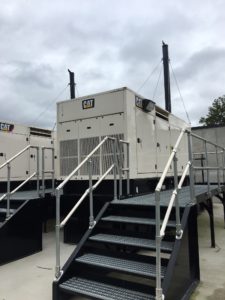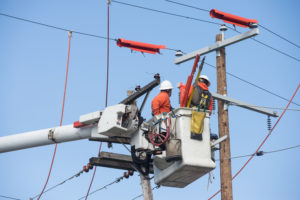 Natural disasters are triggering prolonged power outages with increasing frequency, and the consequences for patients can be deadly. That’s why disaster preparedness consultants, engineering firms, and other experts are being hired in increasing numbers to conduct assessments of power system resilience and emergency response plans at healthcare systems and medical campuses nationwide.
Natural disasters are triggering prolonged power outages with increasing frequency, and the consequences for patients can be deadly. That’s why disaster preparedness consultants, engineering firms, and other experts are being hired in increasing numbers to conduct assessments of power system resilience and emergency response plans at healthcare systems and medical campuses nationwide.
Powered for Patients, a non-profit organization formed after Hurricane Katrina and Hurricane Sandy to safeguard emergency power and expedite power restoration for critical healthcare facilities, can add value to power system assessments and emergency response plan evaluations. As a leader in developing advanced and innovative disaster-response protocols to better safeguard emergency power, Powered for Patients is changing the way healthcare facilities, government officials, and utilities communicate before, during, and after disasters.
Accelerating information flow and resource deployment
New protocols developed by Powered for Patients accelerate information sharing when emergency power is threatened. They can also forestall patient evacuations by enabling faster deployment of government resources and quicker utility power restoration.
These protocols are published in Roadmap to Resiliency, a white paper on safeguarding emergency power co-authored by Powered for Patients and the American Society for Healthcare Engineering. The new practices are also incorporated in the acclaimed playbook, Protecting Patients When Disaster Strikes, developed by Powered for Patients with Department of Homeland Security funding.

Ensuring preparedness compliance
Powered for Patients brings other specialized knowledge to engagements, including a deep understanding of the new CMS Emergency Preparedness Rule and its requirements relating to healthcare facility preparedness and emergency power system capabilities. Powered for Patients also brings unique expertise in helping facilities assess emergency power system resilience.
This expertise was used by the global engineering firm Arup and the State of Massachusetts in a resiliency assessment of state medical facilities. It was also tapped by numerous stakeholders in Florida responding to Hurricane Irma’s deadly impact, including the tragic and avoidable deaths of 12 elderly residents at the Hollywood Hills Rehabilitation Center who died when the extended power outage knocked out the facility’s air conditioning. Leading disaster preparedness firms are also tapping Powered for Patients’ emergency power system resilience expertise.
Enhancing value for partners
Engaging Powered for Patients can significantly enhance the value of power system resilience assessments by leveraging Powered for Patients’ capabilities in these critical areas:
- Conducting facility-specific emergency power system vulnerability resilience assessments to augment engineering assessments of mechanical soundness to provide a broader picture of system resilience.These reviews can include:
– Assess compliance with new CMS Emergency Preparedness Rule relating to emergency power system capabilities including support for air conditioning systems
– Evaluate maintenance protocols before, during and after a disaster
– Assess protocols around spare parts replenishment including onsite inventory and/or arrangements with service providers
– Evaluate flexibility of emergency power system to distribute emergency power across a campus through existing electrical infrastructure and existence of plans to guide this process
– Assess load shedding plans in the event of a partial loss of emergency power
– Evaluate fuel polishing protocols to compare with current best practices - Addressing a facility’s compliance with the new CMS Emergency Preparedness Rule relating to disaster planning and emergency power system capabilities.
- Identifying utility requirements for emergency power system settings before power can be restored following an extended outage and helping to ensure that facilities incorporate these requirements into existing protocols to accelerate power restoration.
- Determining existing notification protocols for government and utility points of contact in the event of an emergency power system failure to help expedite deployment of government support and hasten utility power restoration. In cases were no such protocols exist, Powered for Patients can work with government and utility stakeholders to establish protocols.
- Assessing contracted services for generator maintenance and repair, and fuel delivery to include analysis of likely service provider capacity during large scale disasters.
To tap Powered for Patients expertise to help protect patient safety and add value to work on behalf of clients interested in increasing emergency power system resilience, contact:
Eric Cote, Project Director, Powered for Patients
cote@poweredforpatients.org
401-374-8500
